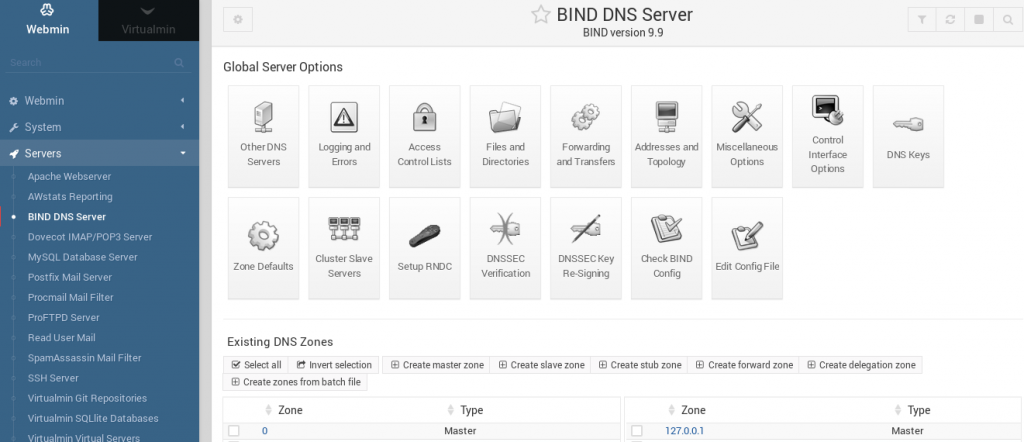New website setup, migrations, etc. involve DNS changes.
Even a slight mistake can make the website down. That’s why managing DNS becomes a crucial task.
Luckily, Webmin DNS management makes things easier and simple to configure a Bind DNS server.
At Bobcares, we often get requests to setup DNS in Webmin as part of our Server Management Services.
Today, let’s get into the details and see how our Support Engineers do Webmin DNS management and fix related errors.
How we manage DNS in Webmin
Let’s now check the steps that we do in Webmin servers.
As a primary step of the website DNS set up, we need to create a master zone for the domain. The master zone defines that this server is the authority for the domain that is being created.
1. Initially, we log into the Webmin control panel.
2. Then, we click on Servers and then the BIND DNS server in the navigation menu.
3. Next, we click on the Create master zone button and fill the following field too.
- Domain name:- Without subdomain E.g. domain.com and not www.domain.com.
- Master server:- Type in the domain name as well, but always ensure that the server’s hostname is correctly updated.
- Email address
4. Finally, we click the Create button to create a new zone.
This is how we create a master zone for that domain. Once it is completed, we can add and modify different records for other domains too.
A complete set of options in Webmin panel shows up as:

How we fix common DNS errors
At Bobcares, where we have more than a decade of expertise in managing servers, we see many customers face problems while managing DNS in Webmin.
Now let’s see the major reasons for DNS errors and how our Support Engineers fix the top errors.
1. Firewall Block
Recently, one of our customers had an error on the website. He was getting an error like
Warning domain.co.uk does not have an IP Address (A) record." "Error None of this zone's name servers responded on the request for 'domain.co.uk' records.Copy CodeOn checking, our Support Engineers found that the BIND was unavailable to the outside world. On further checking, we could see a firewall blocking UDP port 53.
Therefore, we had to tweak the Webmin firewall settings. That solved the problem and the website started working again.
2. Misconfiguration in named.conf
Sometimes, a syntax error or misconfiguration in the /etc/named.conf file prevents the DNS from proper resolving. Whenever a customer has a DNS error we will ensure that the IP is not blocking by any firewall system. After that, we will use the command utility dig to check whether it is resolving to a proper IP address or not.
Also, we also check the /var/log/messages to find the reason for the DNS problem. So, if a syntax error occurs in /etc/named.conf, an error will report in /var/log/messages.
According to that error log, our Support Engineers alter the settings in /etc/named.conf and will solve the error too.
[Need assistance in managing DNS on Webmin? We’ll help you.]
Conclusion
In short, improper Webmin DNS management leads to errors on the website. It occurs when a misconfiguration occurs in the DNS configuration file or due to the bad firewall settings. Today, we saw the various reasons for DNS errors and how our Support Engineers fix them.




0 Comments